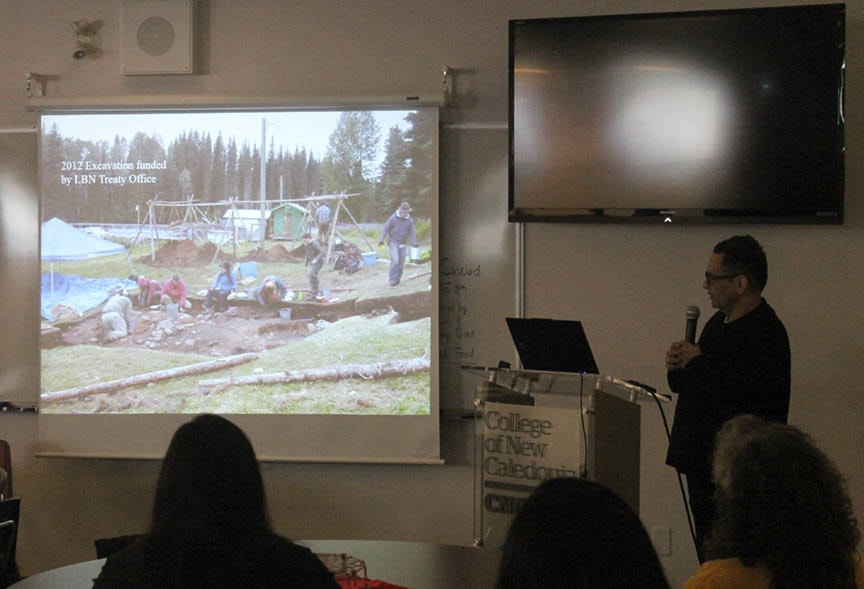Economic activity and engineering has been happening around Babine Lake for at least 1,000 years, archaeological field research has found.
During a presentation on March 14 for Aboriginal History Week at the College of New Caledonia, Dr. Farid Rahemtulla of the University of Northern British Columbia (UNBC) spoke about discoveries made in this area through field research.
Archaeologists from UNBC have been working with members of the Lake Babine Nation (LBN) on the field research for several years.
One of the most impressive findings was that Smokehouse Island, in the Babine River north of Fort Babine was build up slowly by human hands.
More than 1,000 years ago that area of the river was the site of several fish weirs constructed by ancestors of the LBN to catch fish. And over the course of a century, people deposited stone tools and salmon bones on a sandbar, until it became a permanent island.
“Eventually they decided ‘enough is enough’, we need a place where we can cut fish, we can smoke fish…so they decided to build an island,” Rahemtulla explained, adding that archaeological teams have found massive amounts of stone tools in the sediment under Smokehouse Island.
Pieces of wood on the island and the jawbone of a dog were radiocarbon dated as being 1,000 years old.
The artificial island also allowed the people to build more fish weirs across the river, which meant more fish to preserve for the winter, and more wealth.
Remnants of the nearby excavated village, known as Nass Glee, which contained the outlines of old smokehouses for fish were found to be about 1,300 years old, Rahemtulla said.
The bits of tools made of obsidian - a hard, black volcanic rock - that were used for cutting and scraping, show that the people were part of an obsidian trade network that stretched from Alaska down to the Lower Mainland.
Archaeology student and LBN member Kwun Whess, who spoke after Rahemtulla said that when she found an old birch bark basket during a field project in 2015 it turned around her previous atheist beliefs.
“It was explained to me later that I had one of my first spiritual experiences,” she said.
“In 2017 we went back to Nass Glee…I was able to vividly see Nass Glee when it was thriving, as one of the most incredible sights I’ve seen in my life. I realized that I accidentally vision quested myself that day.”
Field research on Nass Glee is due to continue for a few more years.
Blair McBride
Multimedia reporter
Send Blair an email
Like Lakes District News on Facebook
